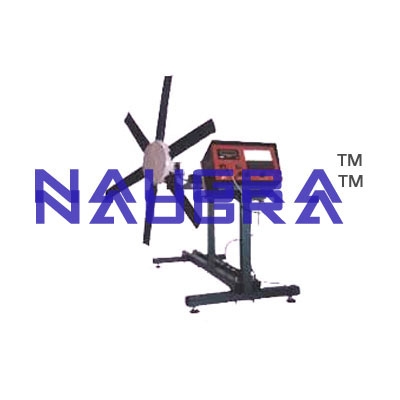- Civil Lab Mechanical Lab Engineering Lab Equipments
- sales@didacticlabequipments.com

CAT NO: DIDACTICNLE-Export-059012
Horizontal Axis Windmill Engineering Lab Training Systems.
Features
Low cost, effective teaching.
Genuine commercial product, modified.
Variable number of blades.
Variable blade angle.
Determination of power output and efficiency.
Requires source of wind.
Three year warranty.
Range of Experiments
To determine the electrical power output and stalling point for a windmill over a range of
Wind speed
Blade Angle
Number of Blades
To investigate the effect of blade stall v. power output
To determine the electrical and mechanical efficiencies of the windmill for the same variables as in (1).
Description
The
windmill is a modified version of a small commercial machine used for
yachts and country cottages. It has six plastic aerofoil shaped blades
mounted in a hollow hub which contains a set of permanent magnets and a
looped conductive winding. When the mill rotates, an alternating voltage
is generated.
Windings are mounted on a disc, which is fixed to a
shaft running in bearings. This shaft is restrained by a phosphor
bronze spring, strain gauged to measure torque. An inductive transducer
is used to measure rotor speed. From these results the mechanical power
can be established. Electrical power output is measured in terms of the
output voltage across a variable load.
The six blades are mounted
in adjustable bosses so that their pitch can be altered. Blades can
also be removed to assess the effect of blade solidity.
A source of wind is required. This can be provided by the Wind Machine.
This
equipment is part of a range designed to both demonstrate and
experimentally confirm basic engineering principles. Great care has been
given to each item so as to provide wide experimental scope without
unduly complicating or compromising the design. Each piece of apparatus
is self-contained and compact. Setting up time is minimal, and all
measurements are made with the simplest possible instrumentation, so
that the student involvement is purely with the engineering principles
being taught.
A complete instruction manual is provided
describing the apparatus, its application, experimental procedure and
typical test results.
